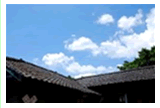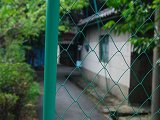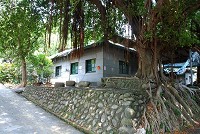Q2. What is the Hansen's disease?(Leprosy)
Q3. Why would there be a compulsory quarantine policy in the past?
Q4. What is the influence of the compulsory quarantine policy?
Q5. Why is it a mistake to build the depot on the Losheng site?
Q6. Why should the Losheng Sanatorium be a World Heritage?
Q7. How are lepers treated in other countries?
1. What kind of a place is Lo-Sheng Sanatorium?
In 1927, the General Governor of Taiwan started to build Losheng Sanatorium as the quarantine and treatment of lepers. The government used the force of sanitary police and the medical officers, the general investigation to quarantine, and to arrest the patients. Imprisonment of the lepers were conducted thoroughly from 1934 till the end of colonial governance of Japan. As a result, Losheng Sanatorium became the institution of compulsory quarantine as well as life-long imprisonment for the leprosy patients.In a way,Losheng Sanatorium is viewed as the epitome of the hundred-year sanitary history in Taiwan. It is the only historical mark that can testify the epidemic prevention history of Taiwan, and it is also the very insightful place for us to reflect upon the human rights issue of the leper patients.《Top》
2. What is the Hansen's disease?(Leprosy)
Leprosy, also called the Hansen's disease,is a chronic bacterial disease infecting the skin and nerves in the hands
and feet. In some cases, the respiratory system. In 1873, a Norwegian doctor, Hansen, discovered the pathogenesis of
this disease, hence, named as Hansen's disease. Leprosy virus is hard to cultivate even in the lab, so the contagiousness
is extremely weak. Almost everyone (90% of the human beings) has the natural immunity against leprosy virus.
Human is the main infection source of the Hansen's disease, and the upper respiratory tract is the major route of infection.
The incubation period could span from three to five years, even up to 40 years. The Hansen's disease is easier to
spread in the environment with poor public sanitation facilities. Currently, the good sanitary condition in Taiwan ensures
that the Hansen's disease almost has no contagiousness, and there is also effective cure for the disease.
《Top》
3. Why would there be a compulsory quarantine policy in the past?
At the beginning of the 20th century, because of the improvement in sanitary condition, the Hansen's disease was almost extinct in Europe and America. However, the Japanese government desired to imitate the militarism of German government, so when they faced the large amount of the domestic leprosy patients, they regarded those patients as "the national humiliation", and began to set up "the prevention law of Leprosy "in 1907. They planned to isolate the lepers from the society, and try to create the illusion in which the Hansen's disease was extinct.《Top》
4. What is the influence of the compulsory quarantine policy?
In order to justify its compulsory quarantine policy, the Japanese government exaggerated the contagiousness of the Hansen's disease, and propagandized it to the society with military force. They educated people that leprosy was extremely horrible, and used the police force and the spy system to "arrest" the patients and put them in hospitalization. This discriminating experience of being arrested in front of their families, friends, neighbors as well as the ingrained infamy of this policy prevented the Hansen's patients from going back to the society even after the compulsory quarantine policy was relieved. It was a tragedy for those patients to have homes they dared not return to.《Top》
5. Why is it a mistake to build the depot on the Losheng site?
The MRT depot was originally planned to be built on the mountains behind Fu-Jen Catholic University, but the plan was changed by local politicians. This is wrong for the following reasons: 1. Waste of money: 3/5 of the depot site needs to be built on flatland; therefore $90 million (USD) will be spent on flattening and improving the soil quality. 2. Destroy Landscapes and ecoloty environment: What comes after flattening the mountains is a ten-story-tall retaining wall, which destroys the natural environment. 3. Safety concern: the future depot will be situated upon earth faults. 4. Ravaged historical site: the Losheng Sanatorium is an important cultural asset for people in East Asia. The depot construction will turn all this treasure into dust. 5. Ordeal for patients: the patients are forced to leave the place they spent their lives, suffering mentally and physically pain from the displacement. 6. Process of autocratic decision-making: the MRT Department never inquired the needs of Losheng patients--the 'residents' of the site—which is a violation of fundamental human rights. 《Top》
6. Why should the Losheng Sanatorium be a World Heritage?
1. the lepers had undergone 70 years of governmental oppression. It is a live showcase of Taiwan's colonial past, history of public health and suppressed human rights. 2. The Losheng Sanatorium is one among the few leprosy sanatoriums left. Its architecture has a mixture of Japanese and Gothic style, along with houses and the exquisite Buddhist dormatory were built by the patients. The Sanatorium retains its painfully organised structure as an embodiment of its colonial past. 3. The Losheng Sanatorium has met many requirements for World Heritage. One UNESCO committee member who visited Losheng has commented that the Sanatorium is qualified at a World Heritage site. He mentioned one World Heritage site, the Robben Island, where Mandela was imprisoned for 27 years, to exemplify the value of human rights.《Top》
7. How are lepers treated in other countries?
In 2001, the Japanese government formally apologized to the maltreated lepers and devised/outlawed the reimbursement laws to give them the justice and honor they long missed. Take the example of National Sanatorium Nagashima Aiseien:
it retains its old architecture and natural environment for educational purposes; the patients live in well-organised houses;
cross road facilities were implemented in the sanatorium for patients who have lost their sight. Every patient has nearly two
nurses to take good care of them.
《Top》












